Editor’s Note: For 50 years, world health policies have relied on research done in the 1960s about just what kinds of fats and oils do the best job of lowering blood cholesterol. Lowering cholesterol was considered a sure sign that heart attack risk was going down as well. Now, data recovered from one of those studies reveals that over time, the people who ate the oils that lowered their blood cholesterol more actually died more often of all causes, and they also died more often of heart disease. It’s a story of mis-placed confidence in vegetable oils, too much Omega 6 oil, and not enough Omega 3. For more, let’s listen in to Joe Hibbeln, from the National Institutes of Health. Joe’s the senior investigator on this study. It was published in the British Medical Journal. It’s titled, “Use of dietary linoleic acid for secondary prevention of coronary heart disease and death.”
TRANSCRIPT FOLLOWS:
JOE HIBBELN – I’m Joseph Hibbeln. I’m the acting chief of the section on Nutritional NeuroSciences for the National Institute on Alcohol Abuse and Alcoholism at the National Institutes of Health
For a long time, you’ve wondered about policies that recommend so much vegetable oil in the US diet.
JOE HIBBELN – Yes. We’ve been concerned that the advice for nearly a half century has been to increase polyunsaturated fat intake without specificity. That is, without saying which of the polyunsaturated fats should be important. We have been concerned that this dietary advice was based on studies that used a mixture of polyunsaturated fats.
Currently the oils recommended by many U-S health agencies include a lot of Omega 6 fatty acids, rather than a more even balance between Omega 3s and 6s.
JOE HIBBELN – In particular there was a study done, the 1970 Oslo Diet-Heart Study, that has been previously cited as an important polyunsaturate intervention trial, that reduced heart disease with vegetable oils, which are often high in Omega 6s. But that trial also gave 6 grams per day of highly unsaturated Omega 3s. It also markedly reduced trans fatty acid intake, in addition to giving lots of Omega 6 polyunsaturates. Now that trial has been cited as a reason to increase all polyunsaturates, and has been cited as a reason to specifically increase Omega 6 fatty acids. And we didn’t think that is correct.
These studies are very expensive to do and take a long time to do. So you and your colleagues searched back in your records for a study that had already been done a long time ago – a study that occurred in Australia in the 1960s.
The 1960s Sydney Diet Heart Study: High in Omega 6 Oils
JOE HIBBELN – Yes, from 1966 to 1973. The Sydney Diet Heart study. We were particularly interested in trying to retrieve the data for this study because it evaluated Omega 6 polyunsaturates with great specificity.
In that Sydney Diet Heart Study, people were told either, eat like always, or else get rid of the saturated fats – butter, animal fat, and instead use safflower oil. How much Omega 6 is in safflower oil?
JOE HIBBELN – It’s nearly pure Omega 6 fatty acids.
Overall, safflower oil is around 75% Omega 6s, meaning around 25% mono and other fats. But for its polyunsaturated fats, as you say, it’s almost entirely Omega 6 and has no Omega 3 to balance it out. Safflower oil was the preferred oil in this study, which looked at men between their 30s and their 60s who already had heart disease, or a heart attack. Half these men were told to get rid of the saturated fat and use the high Omega 6 safflower oil instead. Why did researchers recommend safflower oil to help people’s hearts?
JOE HIBBELN – Back then, the famous Ancel Keys equation had indicated that increasing poly unsaturated fat intake will lower LDL cholesterol and overall cholesterol.
So their recommendation of using safflower oil was based, at least partly, on the assumption that if you lower cholesterol, that should help your heart.
JOE HIBBELN – That’s correct. It was thought that this would reduce the chance of cardiac death.
Data Recovered from 1960s punch cards reveals . . .
Now that you have the recovered data, where you and your research team looked at punch cards and magnetic tape and went through all kinds of hoops to get the full information from the study, it’s startling that no one directing this 1960s era research looked at whether people in the study actually died of heart disease.
JOE HIBBELN – We don’t have the original data protocol. We don’t know whether their specific hypothesis was to reduce overall mortality or whether their primary hypothesis was cardiovascular disease and coronary heart disease mortality.
It looks like the assumption was, well, if we reduce cholesterol, that clearly should help people’s hearts. And the analysis stopped there.
JOE HIBBELN – The original publications should be taken in the context of the time. At that time, there wasn’t a good understanding of the difference between polyunsaturates, such as Omega 6s and Omega 3s. That some might be beneficial and some might be harmful. It wasn’t until the 1970s that the studies were done in the Eskimos, reporting that the polyunsaturates from marine oils, meaning Omega 3s, are very heart protective. The bottom line is, it’s not useful to speculate why the data from the 1960s era Sydney Heart study wasn’t reported in terms of overall mortality. We can speculate that this study was done in the context of an understanding focused on the lowering of cholesterol, and now we understand that cardiovascular disease is really driven by inflammatory processes.
Have there been many studies that look at the overall mortality of people with high intake of Omega 6 versus Omega 3, and then looked at cardiovascular mortality as well.
JOE HIBBELN – There have been sparingly few randomized, placebo controlled trials to attempt to do that. We’ve done our best to assemble those data , differentiating the Omega 3 from the Omega 6 intervention trials, and we’ve done meta-analysis based on that differentiation.
The men who ate more Vegetable Oil died more often than the men who ate Butter.
Joe Hibbeln, this Australian study from the 1960s had been used in the past to support the idea that people should eat less saturated fat and instead eat more vegetable oil. For decades that’s what this study has been used to justify. And now, as you’ve looked at the primary diet, it’s clear that the people who stuck with eating butter and animal fat and didn’t substitute vegetable oil, they died less often from all causes, and they died less often from heart disease, than the men who were told to eat more safflower oil, which means more Omega 6 for the sake of their health. That’s really quite incredible.
JOE HIBBELN Well, yes. We thought it was quite incredible. We don’t know whether lowering saturated fats made any difference. We don’t know whether we would have gotten the same effect by substituting calories from grains with the Omega 6 fatty acids. We’re more confident in the notion that the Omega 6 fatty acids were harmful than we are in the effect of the saturated fats. That’s because we have a mechanistic hypothesis of the role of the Omega 6s.
Omega 6s in high amounts are harmful compared to a balance between Omega 3s and Omega 6s.
JOE HIBBELN – That’s a background hypothesis that gets at one potential mechanism, which is the balance of Omega 3 and Omega 6 inflammatory derivatives. There is good data for example from Lucas in a Lancet study, where he looked at the content of Omega 3s and 6s in the walls of coronary arteries in the plaques, and he found that when the Omega 6s were high, the plaques were more likely to burst. That’s a valid mechanism. But our new study describes a second mechanism and a novel mechanism as to why Omega 6s may be harmful. We have known for a long time that oxidized LDL particles appear to be particularly harmful. They stimulate the immune system and get taken up by macrophages and get transformed into foam cells. One of the questions is what is it in the LDL particle that’s getting oxidized. And Dr. Ramsden pointed out, based on prior German investigators who have observed that when linoleic acid is oxidized, it creates very potent bioactive models, that stimulate inflammation and activate endothelial walls, without having to go through arachidonic acid or glucosinoids.
So the linings of our arteries, which are endothelial cells, are very vulnerable to being stung and burned and rusted by oxidized particles that ding them up. Omega 6 fatty acids are very prone to creating a rusting up and dinging molecule that hurts the lining of the arteries?
JOE HIBBELN: That’s correct. Think of the LDL particle as a ball that includes cholesterol and a protein wrapper, with a lot of fat in the ball. When those fats are linoleic acid and they’re oxidized, that LDL particle is more likely to do oxidative damage. And as another clue that oxidative damage from Omega 6 may be damaging, we found that in the Sydney diet-heart study that the risk of death was particularly increased in men who both increased their intake of linoleic acid and either smoked or drank heavily. Both smoking and heavy drinking create a lot of free radicals, which tend to oxidize LDL.
Smokers and heavy drinkers who ate lots of Omega 6 were especially prone to dying of a heart attack or dying of a stroke.
JOE HIBBELN: I want to clarify that it’s not unhealthy habits in general that increased the risk of death. It was specific habits that increase the oxidative burden.
Speaking of oxidative burden . . . Were men who were diabetic prone to die more often when they ate more Omega 6? Were men who were overweight prone to die?
JOE HIBBELN: I don’t think that those came out as significant findings in this study. I know why you’re asking it, and I’m not certain we have that specific answer in this study.
I was curious because we know that certain hormones tied to metabolic syndrome are drivers of inflammation, just because if insulin goes up, if leptin goes up, then there’s going to be more inflammation in someone’s body.
JOE HIBBELN: Right. We know that for many reasons, an excess of Omega 6 fatty acids accelerate many inflammatory processes.
That is a very intriguing noticing that you did about the smoking and heavy drinking, that those people especially, when they ate more linoleic acid (Omega 6) and less saturated fats, they died more often. This kind of says if you smoke, you should keep eating your butter.
Saturated Fat (Butter) vs Vegetable Oils (High in Omega 6)
JOE HIBBELN: As I say, our study doesn’t necessarily say anything about saturated fats.
Your study doesn’t say anything good or bad about saturated fats. But they do stay neutral in review.
JOE HIBBELN: Right, but it does say that the Omega 6 fatty acids, in particular, appear to be harmful.
But you know what, this Sydney Diet Heart study from the 1960s was used as a basis for policy around the world to reduce the amount of saturated fat in people’s diet. Your reading of the data is that saturated fats stay neutral in this. But the policy that this study was originally used for was to justify saying, get rid of saturated fats. They’re dangerous.
JOE HIBBELN: I’d like to be very clear that we’re not in any position to comment and we have no authority with regards to policy and especially to US governmental policy. I think that the entire body of data of work on saturated fats really needs to be taken into consideration when making those statements that you made.
In your study, there are specific comments mentioning the fact that worldwide policy involves the idea that saturated fats are bad and they should be replaced with vegetable oils. That is a statement in the study and an observation that gives context about why you were curious about doing this study.
JOE HIBBELN: Right. We wanted to test that advice and use the Sydney Diet Heart recovered data to specifically test that advice. And in this case, when that dietary advice was interpreted to be replace saturates with Omega 6, linoleic acid, that advice looks to be very harmful. We probably should have commented in our last line where we say, the findings could have important implications for worldwide dietary advice to substitute Omega 6 LA or PUFAS in general for saturated fats we probably should have said, or PUFAS without specificity. One of the main points we really wish to drive home is that all polyunsaturates are not created equal. And worldwide dietary advice should probably be very specific as to which kinds of Omega 3 and Omega 6 polyunsaturates should be advised.
You know, Safflower oil all on its own is over 70% Omega 6 fatty acids. But there’s a high oleic Safflower oil where the Omega 6s are down around just 10%
JOE HIBBELN: That’s correct.
Most “Vegetables Oils” are high in Omega 6
So there are choices people have about the oils that they eat. But as the chart of fats in your document shows, The most widely used oils in the United States are the ones that are high in Omega 6 fatty acids.
JOE HIBBELN: Well, yes. We published a paper in 2011, where we looked at changes over the past century in U-S consumption of nearly 300 foods from 1909 to 1999. And we found a more than 100,000 fold increase in the consumption of soybean oil. Soybean oil is very rich in linoleic acid. It went from under 2% of calories in the early part of the century to on average 8% of calories and in some populations even higher. If you wanted to make that change in the US food supply and seek approval to do it beforehand, you’d need a very high level of burden of proof to show that kind of dietary change is not harmful in the U-S population. But it has occurred naturally and so in some ways, we’re part of an uncontrolled experiment.
But maybe it didn’t happen so naturally. Butter was basically banned from school lunch programs in 1979, based on data like this from the Sydney heart study. If you ban one kind of fat, you end up using another kind. The USDA can’t tell me which kinds of oils are generally used in school lunch programs, but they generally are vegetable oils. And in most cases, olive oil is too expensive, and I don’t know how often it’s Canola oil. So outside of the high oleic safflower and sunflower oils, it’s probably the case that a lot of the food in public health policy programs are Omega 6s.
Lowering Omega 6s Reduces Need for Super-high Omega 3s.
JOE HIBBELN: We hope that this paper will raise these questions for further examination and not overgeneralize about the health qualities of all polyunsaturates. Probably the best body of data for dietary interventions aside from intervening with the DASH diet is to intervene with a Mediterranean style of diet. That Mediterranean style of diet which was published this week in the New England Journal, and it substitutes out vegetable oils with olive oil, which is lower in Omega 6s. And the Mediterranean diet encourages eating more Omega 3s. We know from a large body of human and animal studies, If you lower the dietary intakes of linoleic acid below 4% of calories, you free up the enzymatic machinery to make more polyunsaturated Omega 3s. We’ve calculated that you might save the world’s fisheries ten fold by bringing the level of Omega 6 intake back to what they were at the beginning of the century, and back to what they were during most of our human evolution.
You’re saying that we might not need more Omega 3s that we eat. We need to reduce the Omega 6s we eat, so our bodies don’t have to undo the damage that excess Omega 6 does.
JOE HIBBELN: Reducing Omega 6 consumption enough would restore the body composition to have have higher levels of especially the long chain marine omegas.
Maybe if fewer Omega 6s were in our diets, we wouldn’t need to take Carlson Cod Liver Oil in the morning.
JOE HIBBELN: We know that we’ve been able to exclusively control the diets in animals, we know that is exactly the case. When you lower the Omega 6 fatty acids sufficiently, your body makes its own Omega 3s that you find in cod liver oil.
(Editor’s Note – many plant-based sources of Omega 3 fatty acids, such as Flax Oil, are in a shorter chain Omega 3 fatty acid that is not very useful to the human body, until that short chain Omega 3 is converted into a long chain Omega 3, like the ones found in fish oil. Joe Hibbeln here is saying that when Omega 6 intake is low enough in the diet, the human body is more efficient at converting short chain Omega 3s into the long-chain version that our bodies need. That means it’s easier for a body to take advantage of Omega 3s found in plant sources, and rely less on the already-long Omega 3s found in fish.)
Or perhaps the body conserves the Omega 3s it already has already and doesn’t have to use them up. It could be one or the other?
JOE HIBBELN: It’s actually likely to not be that. It is likely to be the case that the short chain Omega 3s and Omega 6s compete for the same enzymes for elongation into the long chain omega 3s and long chain arachidonic acids that our bodies need. Just like trying to get through a doorway. If you have 100 football players and 1 cheerleader, trying to get through the doorway, more football players are going to get through the doorway than cheerleaders. That’s the analogy of getting these short chain fatty acids through the choke point of the enzymatic machinery.
But you do need to eat them, and it’s a matter of whether the body can digest them and process them successfully. The body can’t take advantage of the more common, shorter chain Omega 3s in our diet unless the Omega 6 big football players aren’t shoving through at a high rate.
JOE HIBBELN: Yes. We are awaiting the best trials in humans to definitively demonstrate this, and it’s difficult to do because people carry around so many kilograms of linoleic acid, accumulated from birth until today.
So we already have so many big Omega 6 fatty acid football players inside of us that even if we stop eating it for months or maybe even a few years, there’s a lot of football players still waiting to get through the door.
JOE HIBBELN: Yes.
High Omega 6 increases Mouse Obesity in a high-fat diet AND in a low-fat diet
You’ve mentioned the Mediterranean diet and how recent news indicates it’s an incredibly healthy diet, in part perhaps, because of all the olive oil. There was another Harvard study, published June 2012, that compared a Mediterranean diet, a low fat diet, and also a very low carb, high fat diet. Actually, the data on inflammatory markers on the very high fat, low carb diet were very good, even with saturated fat as part of the makeup. Do you have any comments on that?
JOE HIBBELN I don’t know the specific study you’re referring to. But the issue of high fat diets needs to be looked at very carefully. Just as all polyunsaturates are not created equal, all high fat diets are not created equal. A good example of this is an animal study we did where we compared three high fat diets. All with 60% of calories from fat, in mice. We compared high fat diets that resembled the linoleic acid, Omega 6 intakes, comparable to the levels at the beginning of the century, which was about 1 percent of calories, and those high fat diets with 8 percent of calories, more similar to the amount of Omega 6 in the diet simply from soy oil in the U-S diet, today. Moving from 1% to 8% linoleic acid in the mouse diets, not only tripled the levels of arachidonic acids, but also tripled the levels of a critical derivative of arachidonic acids, which is an endogenous cannabinoid, which creates a similar affect to marijuana. So it’s the brains own marijuana like molecules, and we were able to triple the body’s marijuana like hormones, three times higher in the liver and about 20% higher in the brains just by altering the linoleic acid in those two high-fat diets. Normally those high fat diets used for mice in studies are composed of high linoleic acid, found in soybean oil. When we deleted that one single molecule, the Omega 6 fatty acid, we were able to obliterate the ability of a 60% high fat diet to induce obesity in the mice.
When you stopped feeding the mice soy oil?
JOE HIBBELN: That’s correct.
That’s all it took.
JOE HIBBELN: And we did it also in diets that were 35% of calories from fat, and also diets that were 12% of calories from fat. We were able to induce obesity in low fat diets, in the mice, by changing the bioactive properties of the fat, not just that it was high fat and more calories.
So just by switching to or from Omega 6, you changed the fattiness of the mice. You made the mice fat on a low fat diet by raising Omega 6, and you helped the mice be normal weight on a 60% fat diet, by minimizing the Omega 6.
JOE HIBBELN: To induce obesity in the mice, it was specifically by elevating the Omega 6, mimicking what has occurred in the last century from evolution, elevating that Omega 6, linoleic, which tripled the arachidonic acid, which tripled the endogenous cannabinoids.
Do you eat any soy oil, after all of this research you’ve done.
JOE HIBBELN: It’s very difficult to avoid soy oil completely, in the U-S and especially when you’re traveling. I do my personal best to lower my Omega 6 intake and elevate my long chain omega 3 intake.
I’ve heard of people who carry little vials of olive oil when they travel, so they can always have olive oil on their salads.
JOE HIBBELN: Yeah. We looked at this Sydney heart study, in many ways as a safety study. We have seen many indications for lowering Omega 6 fatty acid intake. In obesity, in psychiatric disorders, and in inflammatory disorders. In the process, we wanted to assess whether or not it would be safe to lower linoleic acid, because it would be lowering a polyunsaturate. This study solidly confirms, and the meta analysis confirms that there don’t appear to be any harms to lowering linoleic acid.
Because in the study, the option for the controls was to just keep eating a lot of saturated fat. And they did better than the people who had higher linoleic acid.
JOE HIBBELN: And we’re fairly confident that this was not due to trans-fatty acid intake differences between the two groups. In part because most of the dietary intervention between the two groups was in consuming more liquid oils, and the amount of margarine provided to the two groups was not large. And also, trans fats tend to increase heart disease risk when there’s also evidence that the trans fats are raising cholesterol. When those trans fatty acids raise cholesterol. For incrementally lower levels of cholesterol, we saw an incrementally higher level of cardiovascular risk.
Joe Hibbeln, to confirm that people really were sticking with eating more safflower oil, you looked to see whether their cholesterol had been lowered. That is an effect of eating more safflower oil, and that’s still the people who died. The reason that’s interesting is because right now, there’s such an emphasis on lowering cholesterol as a way to reduce heart disease risk. Yet, in this study, the people who lowered their cholesterol, died more often.
JOE HIBBELN: Yes.
Do you want to go back and do more recovered data studies, because that kind of data is so precious.
JOE HIBBELN: If there are more data sets to recover data from, it’s the best to get the most out of them. With new science and new hypothesis, this same data can give us new insights.
Last question is about saturated fat. I hear that you don’t want to weigh in and say, gosh, this study showed people who ate more saturated fat died less often, so, why not just eat the butter. You’re not as comfortable with saturated fat as some researchers are.
JOE HIBBELN: I think the data on saturated fats needs to be looked at as a whole body of data. I don’t have expertise in that area. I can say that in this study, when linoleic acid replaced saturates, we had this effect. But I don’t know if we would have seen the same effect if linoleic acid had replaced carbohydrates, or replaced other foods. I don’t think these are as strong evidence that saturated fats are more or less harmful. But I think you can say that saturated fats, in comparison to linoleic acid . . .
Are not as dangerous as the Omega 6 linoleic acids.
JOE HIBBELN: Yes. Based on this study.
Editor’s Note: For commentary on this study, check out Loren Cordain’s new podcasts. In his March podcast, “New Thinking on Oils and Cardiovascular Disease,” he discusses this study from the perspective of paleo diets and human evolution.
Additional Editor’s Note: The USDA has some data on what kinds of oils and fats are used in national school lunch programs. The bottom line is that most oils and fats used are generic “vegetable oils.” This generally means oils such as soy, which are 50% Omega 6 fatty acids. This chart summarizes the oils used to feed kids at school. Here’s more on that topic, from the USDA:
“Federal requirements do not specify what type of fat must be used in meals. Instead, the meals must meet saturated fat and trans fat limits. This means that meals must contain less than 10 percent saturated fat and zero trans fat. Local school districts determine which oils to use when preparing school meals. We do not collect data on all school purchases. In 2012, we published a study on school food purchases that included a representative sample of 400 school districts. The attached spread sheet contains data on purchased oils or shortening from the study. The full study and its appendices can be viewed
at: http://www.fns.usda.gov/Ora/menu/Published/CNP/FILES/SFSPIII_Final.pdf andhttp://www.fns.usda.gov/Ora/menu/Published/CNP/FILES/SFSPIII_Appendices.pdf.

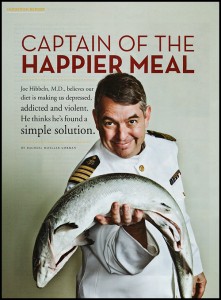
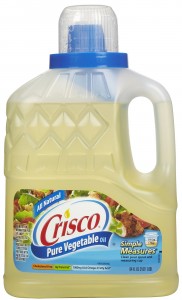
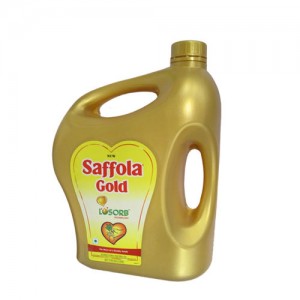



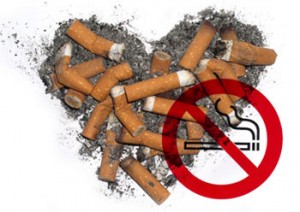
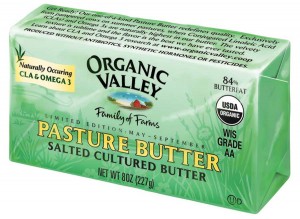
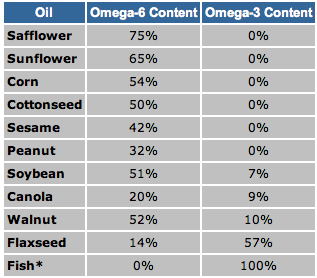
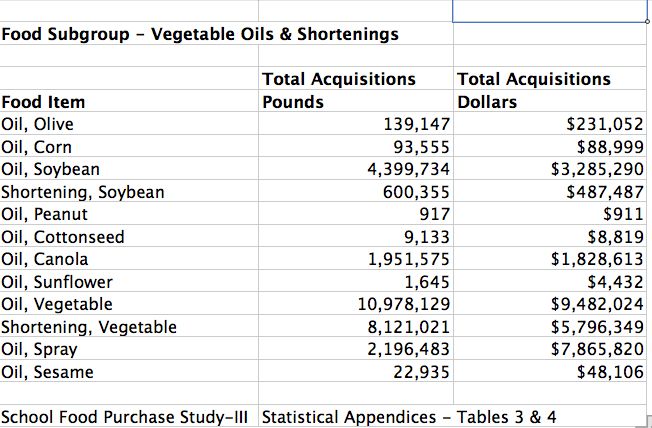
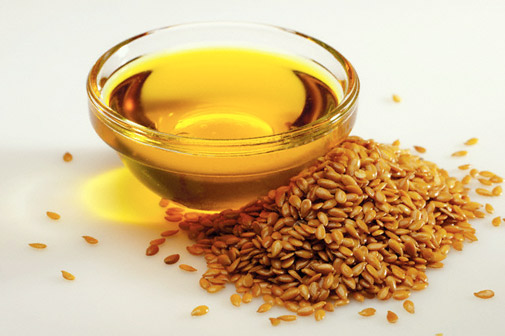


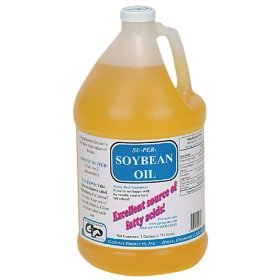
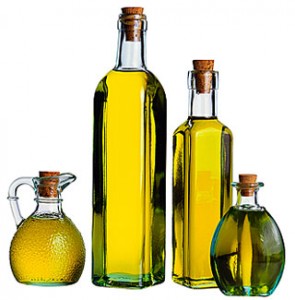





12 comments for “Joe Hibbeln: More “Vegetable” Oil? MORE Heart Deaths”